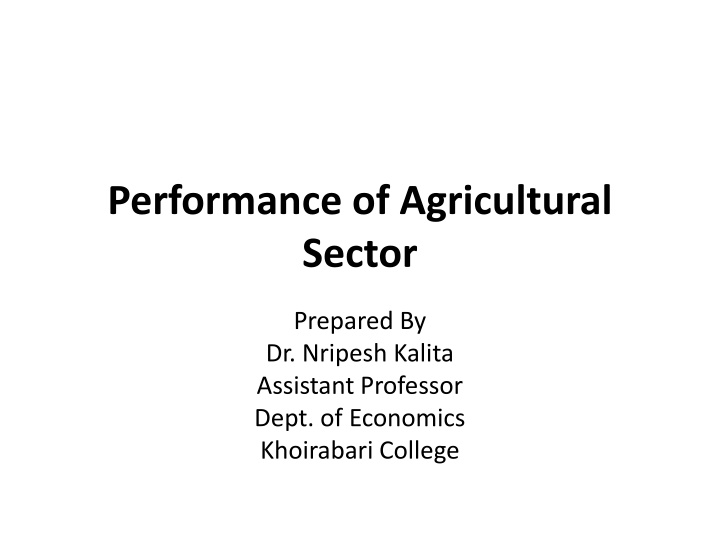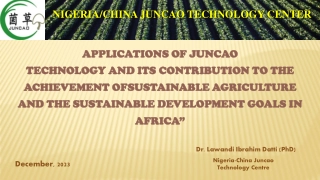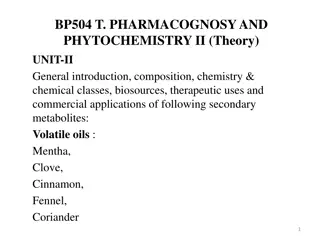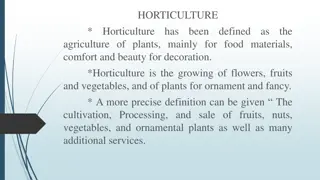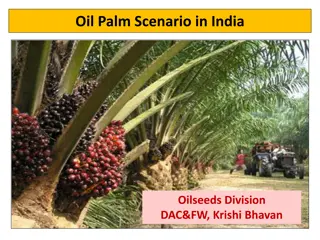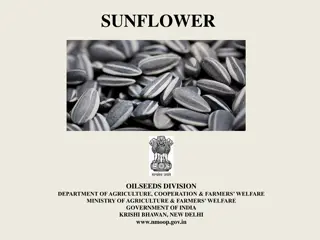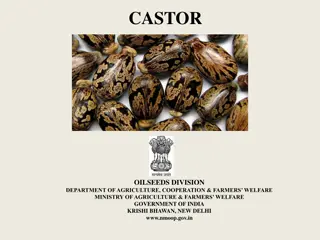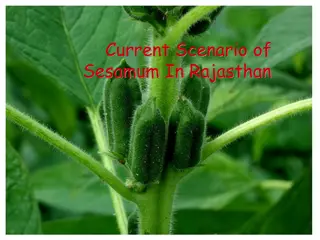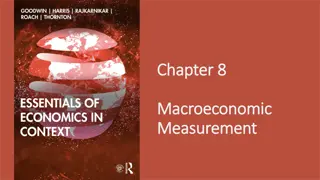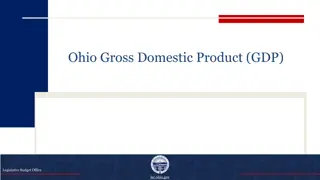Decline in Agricultural Sector's GDP and Transition to Modern Cultivation
Importance of agricultural sector in India, decline in GDP share, reasons behind decline, shift towards modern cultivation for self-sufficiency in food production. Government policies post-reform years and impact on the sector.
Download Presentation

Please find below an Image/Link to download the presentation.
The content on the website is provided AS IS for your information and personal use only. It may not be sold, licensed, or shared on other websites without obtaining consent from the author.If you encounter any issues during the download, it is possible that the publisher has removed the file from their server.
You are allowed to download the files provided on this website for personal or commercial use, subject to the condition that they are used lawfully. All files are the property of their respective owners.
The content on the website is provided AS IS for your information and personal use only. It may not be sold, licensed, or shared on other websites without obtaining consent from the author.
E N D
Presentation Transcript
Performance of Agricultural Sector Prepared By Dr. Nripesh Kalita Assistant Professor Dept. of Economics Khoirabari College
1. Introduction 2. Agricultural Sector in India - 2.1 Post-Reform Years 3. Traditional Cultivation to Modern Cultivation 3.1 Impact of Green Revolution 3.2 Problems of Indian Agriculture 4. Relationship between Agriculture and Industries - 4.1 Interdependence Between Agriculture and Industry 5. Conclusion
Introduction The importance of agriculture sector in the Indian context can be understood from the fact that it continues to be the key for poverty alleviation, employment generation and an important source of foreign exchange earnings. Being the main source of employment and livelihood for close to 50 percent of the Indian labour force, agriculture continues to be the backbone of Indian economy. Although the contribution of agricultural sector to total GDP of India is declining over time, it continues to occupy its important place in the economy because of its linkage with the economic activities in the secondary and tertiary sectors of the economy.
There has been a consistent decline in the share of agricultural sector s GDP of India from the 53 percent in 1951 to about 14 percent in 2014. As a consequence, the share of industries and services sectors has increased from 17 percent to 26 percent and from 30 percent to 60 percent (over the period of 1951 to 2014) respectively. The main reasons behind the decline in the share of agricultural sector in total GDP are: (i) traditional means of cultivation, (ii) dependence on monsoon, (iii) small land holdings, (iv) low productivity, (v) reduced subsidy in the post-reform years of 1990s, (vi) low skill levels of farmers, (vii) inadequate investment in infrastructure necessary for better performance of agricultural sector, (viii) price volatility, etc.
High fiscal deficit was one of the factors which forced the Indian government to forgo the inward looking policies of import substitution and adopt an outward looking policy of export promotion for economic Reduction in fiscal deficit was one of the conditions imposed by the IMF (International Monetary Fund) while extending the bailout package in the early 1990s. advancement.
TRADITIONAL CULTIVATION TO MODERN CULTIVATION In mid-1960s, the Government of India realised that she should attain selfsufficiency in food production because of its geo-political compulsion. During this time, India devoted lot of resources in fighting a war with China (in 1962), Pakistan (in 1965) and faced two consecutive droughts (in 1965 and 1966). Apart from these, USA threatened India to stop its wheat export (under the scheme PL480) because of India s stand on the Vietnam War which was against the USA. PL480 was an agreement between India and USA under which India was receiving wheat from USA at subsidised rate in the form of food aid. All these events compelled India to resolve for avoiding a situation of food crisis as a matter of extreme priority.
3.1 Impact of Green Revolution Although India attained the much needed goal of producing enough food grains for its population, it also resulted in the widening of income inequalities, particularly in rural inequality, causing regional imbalances in India. Big landlords and farmers benefited a lot from the Green Revolution by virtue of their large land ownership which was required for the capital intensive cultivation of the HYV seeds. The impact of green revolution on India can be stated to have resulted in the attainment of: (i) self-sufficiency in production of food; (ii) shift from traditional means of cultivation to scientific cultivation; (iii) increase in productivity of crops; and (iv) increase in income of farmers; but at the cost of increase in income inequality and regional imbalances.
3.2 Problems of Indian Agriculture The foregoing sections reveal that even though we achieved self-sufficiency in food grains, and have now become food exporters, it is a fact that in terms of productivity levels we have much lagged behind. This is mainly because the Indian agriculture has continued to suffer from certain problems. These are as follows.
Irrigation: Indian agriculture is still dependent on monsoon because of inadequate availability of irrigation facilities like tube wells, canals, etc. which are very much required for controlled irrigation of crops. Inadequate Investment: government and corporate sector in Indian agriculture is very low due to which there is inadequate infrastructure much required for better performance of the sector. Investment by
5.4 RELATIONSHIP BETWEEN AGRICULTURE AND INDUSTRY Early phase of economic development is characterised by large section of population who are poor, less educated and live in rural areas for their survival. The significance of agricultural sector in economic development was first emphasised by Physiocrats (the group of French economists prior to Adam Smith), before the emergence of classical economists.
5.1 Interdependence between Agriculture and Industry Kuznets summarised the contribution of agricultural sector to economic development in the following words: produces food and raw materials; creates market for goods and services produced by the secondary and tertiary sector; supplies labour and capital to the manufacturing and services sectors;and earns foreign exchange through trade.
Conclusion The unit discusses the performance of agriculture sector in terms of its contribution to the GDP of India, production of food grains and non-food grains and employment generation. While analysing the performance of agriculture in terms of its contribution to total GDP of India is steadily declining to a corresponding increase by the secondary and the tertiary sectors of the economy. However, agricultural sector is still very important as it continues to support the livelihood of maximum households living in the rural areas. The role of the Green Revolution marks for a landmarkachievement despite its adverse impact on inequality and regional imbalance.
